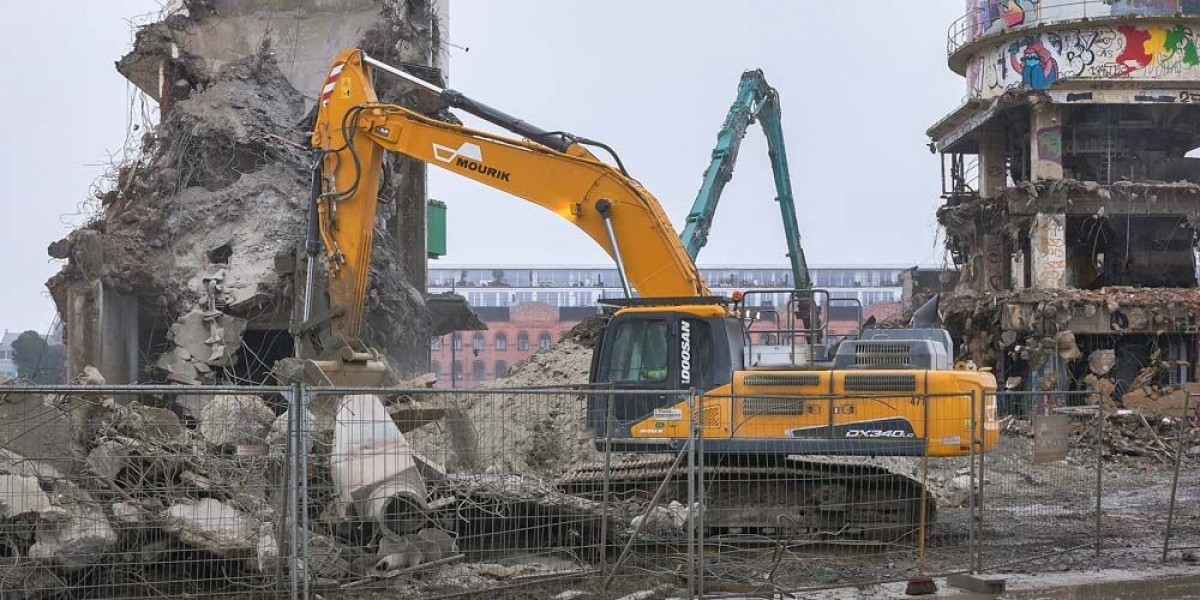Demolition projects often involve the removal of old structures or parts of buildings, which can sometimes include materials containing asbestos. Asbestos, a hazardous substance previously used for its fire-resistant properties, poses significant health risks if its fibers are inhaled. Proper handling and removal of Demolition Asbestos demolition are critical to ensuring safety and regulatory compliance. This guide provides a detailed overview of demolition practices involving asbestos, including safety measures, regulatory requirements, and best practices.
1. Understanding Asbestos
a. What is Asbestos?
- Asbestos is a group of naturally occurring minerals composed of fine, durable fibers. It was widely used in construction materials for insulation, flooring, roofing, and fireproofing due to its strength and resistance to heat.
b. Health Risks of Asbestos
- Inhalation of asbestos fibers can lead to serious health issues, including lung cancer, asbestosis (a chronic lung disease), and mesothelioma (a rare cancer of the lining of the lungs or abdomen).
c. Common Asbestos-Containing Materials (ACMs)
- Asbestos was commonly used in products such as pipe insulation, cement sheets, floor tiles, ceiling tiles, and thermal insulation.
2. Legal and Regulatory Framework
a. Regulations and Standards
- International Regulations: Different countries have varying regulations for asbestos handling. For example, the European Union and the United States have stringent guidelines for asbestos management.
- Local Regulations: In Dubai, the Dubai Municipality has specific guidelines and regulations for managing asbestos. Always consult local regulations to ensure compliance.
b. Licensing and Certification
- Demolition Contractors: In many jurisdictions, demolition contractors must be licensed or certified to handle asbestos. Check for proper certification before hiring a contractor.
- Asbestos Removal Specialists: Qualified specialists should carry relevant certifications to handle and remove asbestos safely.
3. Planning and Preparation
a. Pre-Demolition Asbestos Survey
- Inspection: Conduct a thorough survey of the building to identify the presence and location of asbestos-containing materials (ACMs).
- Sampling and Testing: Engage a qualified asbestos consultant to collect samples and test for asbestos presence. Analysis is typically done in a laboratory setting.
b. Risk Assessment
- Hazard Identification: Evaluate the potential risks associated with asbestos during the demolition process.
- Control Measures: Develop a risk management plan, including control measures to minimize asbestos exposure.
c. Notification and Permits
- Regulatory Notification: Notify local regulatory authorities about the demolition project and any planned asbestos removal.
- Permits: Obtain necessary permits for asbestos removal and demolition as required by local regulations.
4. Safety Measures and Procedures
a. Personal Protective Equipment (PPE)
- Respirators: Use high-efficiency particulate air (HEPA) filters in respirators to protect against asbestos fibers.
- Protective Clothing: Wear disposable coveralls, gloves, and boots to prevent asbestos contamination.
b. Asbestos Removal Techniques
- Wet Methods: Use water or an approved wetting agent to suppress asbestos dust during removal.
- Enclosure and Containment: Seal off the work area to prevent asbestos fibers from escaping to other parts of the building or the environment.
c. Decontamination and Cleanup
- Decontamination Units: Set up decontamination units for workers to remove asbestos dust from their clothing and equipment.
- Waste Disposal: Collect and dispose of asbestos waste in accordance with local regulations, typically in specially designated landfills.
5. Demolition Process
a. Controlled Demolition
- Safe Methods: Use controlled demolition methods to minimize disturbance to asbestos-containing materials. This may include dismantling rather than explosive demolition.
- Dust Suppression: Implement dust suppression techniques to reduce airborne asbestos fibers during the demolition.
b. Monitoring and Air Quality
- Air Sampling: Conduct regular air sampling to monitor asbestos fiber levels in and around the work area.
- Continuous Monitoring: Use real-time monitoring equipment to detect and manage any potential asbestos fiber release.
6. Post-Demolition Procedures
a. Site Clearance
- Final Inspection: Perform a final inspection of the site to ensure all asbestos-containing materials have been removed and properly disposed of.
- Clearance Certification: Obtain a clearance certificate from an accredited professional, confirming that the site is free of asbestos hazards.
b. Documentation and Reporting
- Records: Maintain detailed records of the asbestos removal and demolition process, including surveys, permits, and disposal receipts.
- Reporting: Submit required reports to regulatory authorities as evidence of compliance with asbestos management regulations.
7. Best Practices for Asbestos Management
a. Training and Education
- Worker Training: Ensure that all personnel involved in demolition and asbestos handling receive proper training on safety procedures and regulatory requirements.
- Public Awareness: Educate the public about the risks of asbestos and the importance of proper management.
b. Ongoing Monitoring and Maintenance
- Regular Inspections: Conduct regular inspections of buildings to identify potential asbestos risks before demolition or renovation.
- Asbestos Management Plan: Develop and implement an asbestos management plan for ongoing monitoring and maintenance.
8. Conclusion
Demolition involving asbestos requires meticulous planning, adherence to safety regulations, and implementation of best practices to protect health and the environment. By following the guidelines outlined in this guide, you can ensure a safe and compliant demolition process, effectively manage asbestos risks, and contribute to a healthier environment. Always stay informed about the latest regulations and advancements in asbestos management to maintain high standards of safety and compliance.



